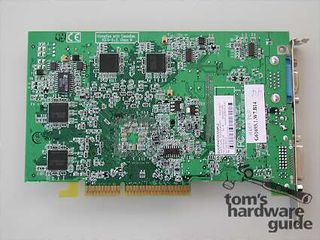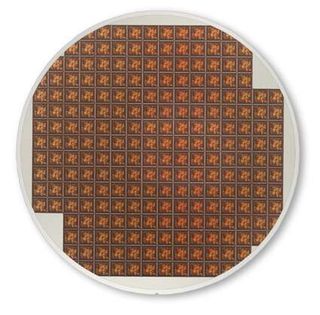Introducing ATi's New Middle Class: The Radeon 9600 PRO
Radeon 9600 PRO, Alias RV350

The Radeon 9600 PRO reference card.
The Radeon 9600, also known as the RV350, is taking the place of the 9500 series in ATi's product line, which was based on the R300 (Radeon 9700). With the introduction of the Radeon 9500 series, ATi created a good deal of confusion, as the two chips of that family differ in the number of pixel pipelines that they offer. While the 9500 PRO and all cards of the 9700 series feature eight pipes with one texturing unit each, that number was reduced to four in the non-PRO version, adversely affecting gaming performances, especially when using anisotropic filtering. The Radeon 9500 PRO, meanwhile, was head and shoulders above the competition, namely NVIDIA's GF4 Ti 4200, thanks to its fast FSAA and anisotropic filtering performance. While the DirectX 9 support definitely didn't hurt either, it remains a theoretical advantage to date, due to a lack of titles for that API.

The backside of the card.
ATi was never able to turn much of a profit with the Radeon 9500, since it is only "artificially" throttled. Quickly, adventurous modders found ways to re-enable the four deactivated pipelines. The trouble is that the 9500/ 9500 PRO chips have the same amount of transistors as the high-end models, weighing in at a hefty 107 million transistors. That's quite a lot for a mid-range chip. Compared to the relatively moderate 63 million transistors of a GF4 Ti 4200, that makes the 9500 a very expensive chip indeed.
In the end, ATi was able to beat NVIDIA's competing products - but, quite literally, at a price. The end result was a dearth of chips, since ATi was unable (or unwilling?) to keep up with demand. The chip simply cost ATi too much for the market at which it was aimed.

Photo of a wafer with NVIDIA GeForce FX 5600 GPUs.
The new Radeon 9600/ 9600 PRO remedies this situation. Like the Radeon 9500, the RV350 chip has only four pixel pipelines, but physically, this time. That spells the end of the popular mods witnessed with the 9500 - these are no longer physically possible. The changes go even further, though. The number of vertex shader units has also been slashed from four to two. This brings the chip's transistor count down to a much "healthier" (think bottom line here) 75 million transistors. Combined with its 0.13µ production process, the production cost for the chip is now down to the regions of its direct rival, the GeForce FX 5600 with its roughly 80 million transistors. This should enable ATi to rejoin the game for market share with lower stakes.
Stay on the Cutting Edge
Join the experts who read Tom's Hardware for the inside track on enthusiast PC tech news — and have for over 25 years. We'll send breaking news and in-depth reviews of CPUs, GPUs, AI, maker hardware and more straight to your inbox.
Current page: Radeon 9600 PRO, Alias RV350
Prev Page Introduction Next Page The Radeon 9600 PRO In SummaryMost Popular

